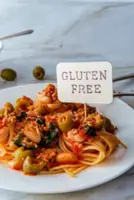Synthetic biology has helped develop the reddish liquid which mimics the bleeding of red meat. — IMPOSSIBLE FOODS
If Artificial Intelligence (AI) is the latest fad to worry about, then maybe the good news is that it can help an old fad retain its relevance. It seems ancient news now, but synthetic biology was a big thing in science around two decades ago, though many people did not seem to be aware of it even then.
The synthetic car





